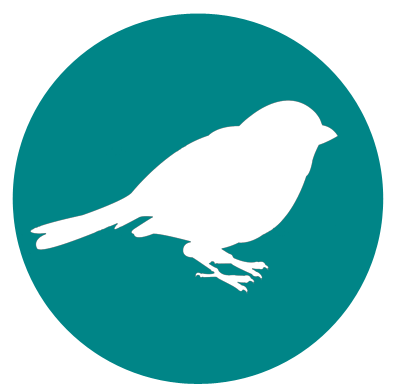Birding at Scioto Greenway Trail
Columbus, OhioGeneral Information
Address
Lower Bike Path – Greenlawn Ave. west of Front Street; dam, marina, and upper bike path off Whittier, west of Front Street.
County/Counties
Franklin
DeLorme Page Number and Coordinates
(7th Edition and earlier) page 68, sec. A1
Nearest Town or City
About 1.5 miles south of downtown Columbus, Ohio.
Directions from Nearest Town or City
From I-70, exit at Greenlawn Avenue, turn east. Proceed about ¾ mi. to Scioto River bridge. Just before the bridge, enter lower bike path at the Columbus Fire Department training area and maintenance garage on the left, west of the Scioto River. To reach upper bike path and Greenlawn Dam and Marina, cross Scioto River bridge to Front Street (about .3 mi.). Turn north (left) to first street light at Whittier Street (less than one mile) Turn west (left), cross railroad overpass to entrance on left immediately ahead.
About Scioto Greenway Trail
The entire bike trail is 18 miles long, but this guide covers only the section from Frank Road on the south to the meadow north of the Greenlawn Dam, about 3 miles or so. There are diverse habitats along this riparian corridor, making it favorable to a wide variety of birds: a reservoir, islands, floodplain woods, mature wooded paths, and a meadow.
1. Marina, reservoir, and dam off Whittier Street: This is a good point to scan the reservoir and its islands from the benches – or even your car – located on the high ground near the boat launches. Scopes are recommended. The small island at the western end of the reservoir is a regular roosting spot for Great Egrets and Black-crowned Night Herons from late summer to early fall. The lower end of the long island or peninsula in the middle of the reservoir has a mudflat during lower water and should be checked for gulls, terns, and shore birds in season. This was the location of a Great Black-backed Gull a few winters ago. During spring and fall, migrant ducks, grebes, and cormorants can be found. Watch for migrant Ospreys fishing the waters as well as large flocks of swallows and, occasionally, a Peregrine Falcon from the downtown nest. Be sure to check the south end at the dam for Yellow-crowned Night-Herons in the summer and wintering Common Goldeneyes, Buffleheads, and Hooded Mergansers in the open water below the dam in season.
2. North Bike Path: Reach the paved path at the north end of the parking lot. This leafy trail hosts warblers and other songbirds during spring and fall migrations, and provides nesting habitat to House Wrens, Gray Catbirds, Warbling Vireos, Yellow Warblers, Baltimore Orioles, and other local residents. Proceed along the path until it opens out on the left above a storm sewer outlet. This is often a good place to check birds on the north end of the mudflat. All the common shorebird species can be seen here in the fall along with some less common ones such as Stilt Sandpiper and Black-bellied Plover. American Pipits may be found on the mudflat, too. Don’t be surprised if you see evidence of beavers working on the trees as they have been seen recently making a comeback along the river.
Shortly, the path opens out on the right to a grass-covered ridge. Watch for tracks on the left and follow the third or fourth on the left to the cove. Look for migrant dabbling ducks and resident Green Herons. Return to the bike path and continue to the meadow on the left. A dirt path follows the perimeter of the meadow and during migration can be very productive in the morning for songbirds, Most of the sparrow species (including Clay-colored) have been found here as well as many warblers (including Golden-winged and Yellow-throated). Eastern Bluebirds and Eastern Meadowlarks have been seen and you might flush an American woodcock in March or April.
3. South Bike Path: The paved path begins south of the dam and west of the river. Either drive to the access point (driveway just west of the Scioto River bridge on Greenlawn Avenue) or walk there south along Front Street. While the habitat is similar to the north path, the woods are wider and denser and include a wide wooded flood plain that can be very productive for migrant songbirds including Olive-sided Flycatcher, Worm-eating Warbler, and Connecticut Warbler. In addition to those found on the north path, nesting birds have included Yellow-crowned Night Herons, Wood Ducks, Prothonotary Warblers, and Indigo Buntings. In winter an assortment of ducks feed in the open waters.
Approaches to birding are more varied here than on the north path. One may stay on the paved path, walk along the western edge adjacent to Berliner Park, and/or follow the dirt tracks in the flood plain woods. All of these provide excellent habitat and at the right time can reward the patient birder with great views of good birds.
Visiting Information
Closed hours/season
Open all year during daylight hours.
Parking Areas
There is a lot at the marina/dam area. For the lower bike trail, limited parking is available in the fire department training area. More parking on south side of Greenlawn Avenue at Berliner athletic facility/park.
Fees/Permits
None.
Restroom Facilities
Portable toilets at Berliner Park. Otherwise, you’ll need to go to area gas stations or restaurants.
Harmful Insects, Poisonous Plants, or Animals
Just the usual mosquitoes, ticks, and poison ivy. The Cooper’s Hawks get testy when their young are fledging – watch for dive-bombing mothers!
Restaurants in the Area
East on Greenlawn at High Street, there are a BP gas station with a coffee shop and a White Castle restaurant. For more fast food (Wendy’s, McDonald’s, Subway, Chipotle), go north on High. (You cannot turn left onto High from Greenlawn, so must turn north (left) on Front Street, then right on a cross street. There is a light for an easier left turn at High and Whittier. Excellent breakfasts are at First Watch, next to Chipotle’s on High Street. Non-fast food restaurants, delis, and coffeehouses are in German Village on Third Street.
Other Birding Spots in the Area
Green Lawn Cemetery.
Birds of Interest by Season

Winter
Ducks (dabbling and diving) and grebes in open water, gulls, Carolina Chickadee, Golden-crowned Kinglet, White-crowned and White-throated Sparrows.
Spring
Nearly all migrating Ohio ducks, herons, and grebes; osprey, Broad-winged hawk, Peregrine Falcon, Bald Eagle; common shorebirds if water levels are appropriate; Black-billed and Yellow-billed Cuckoos; all Ohio flycatchers, including Olive-sided; swallows, including Purple martin; Winter Wren; vireos; most of the Eastern wood warblers, including Orange-crowned, Worm-eating, Connecticut, Golden-winged, and Prothonotary; both Scarlet and Summer Tanagers; Rusty Blackbird, Orchard Oriole, Baltimore Oriole; Rose-breasted Grosbeak, Indigo bunting, Rufous-sided Towhee, Fox Sparrow, Harris’s sparrow, Purple Finch. Nearly all of these less common birds are seen at least once each spring.
Summer
A much quieter season, but commonly seen birds include Great blue and Green Herons, and Yellow-crowned and Black-crowned Night-Herons; Cooper’s and Red-tailed Hawks, American Kestrel, Peregrine Falcon; Spotted Sandpiper; Ring-billed Gull; Common Nighthawk; Eastern Wood-Peewee, Willow Flycatcher, Eastern Phoebe; Carolina Chickadee; Warbling and Red-eyed Vireos; Yellow, Black and white and Prothonotary Warblers; Baltimore Oriole.
Fall
Most of the same birds seen in the spring, with large concentrations of swallows and swifts.

